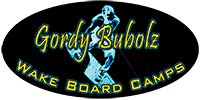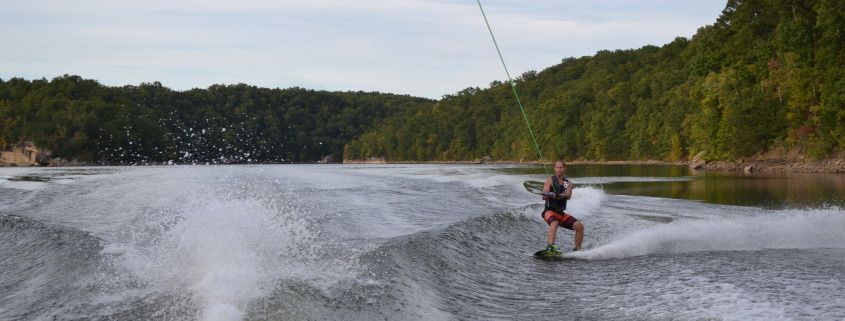Edging Techniques
One of the keys to becoming an advanced wake boarder is the ability to create the proper edge to the wake. There are 3 basic styles of edging that you should practice, and be able to call upon for different types of tricks.
Basic Progressive Edge
This is the type of edging style you should try to learn first, as a base for the other two.
The Technique:
Cut out wide, about 20-25 feet from the wake so you will be edging in on your heel side. Start your cut toward the wake by slowly drifting in from the line tension. Then gradually increase your pull against the boat, so that your hardest cut is through the top of the wake. Your cut should model the swing a pendulum, slow on the outside, then speeds up all the way to the center. Apply the progressive edge to these types of tricks: Backroll, Roll to Revert, Raley, Front Flips, Toe side Front and back rolls.
Non-Progressive Edge
In this style of edging, the goal is to be able to clear the wake, with out creating too much line tension. This is very useful when trying to learn any type of trick that requires a handle pass, such as a 360, an invert to blind, or off axis spins.
The Technique:
This is similar to the previous method in that you start your cut out wide, but differs in the last half of your edge toward the wake. As you approach the wake don’t increase your pull, just try to ride over the wake without edging too hard through it. In most cases, you will want to land right on the downside of the wake.
Short Progressive Edge
This drill is useful for beginning riders trying to clear both wakes, as well as advanced wake boarders trying difficult moves, like a back mobe, that require extra vertical lift.
I try to teach this method to riders that are trying to clear both wakes, because it really forces them into the intimidating task of edging all the way through the top of the wake.
The Technique:
For beginners, the goal is to start as close to the wake as possible, while still being able to clear it. Start a progressive cut about 8′ out from the wake, and try to clear both wakes. If you are successful, start moving in 1′ closer on the following jumps. This drill will significantly raise your comfort level with edging though the top of the wake.
Practice these 3 techniques on both heel side and toeside jumps, and you will be able to learn new tricks faster and with fewer falls.
Trouble shooting
Face planting when you land?
When you get into the air, pull the handle into your hips. This way if you get off balance when you land your arms will be able to give some line tension back, and you won’t get pulled forward.
Getting distance in your jumps, but not any height?
This is caused from two things. One is; flattening your board out as you approach the wake, or two; absorbing the wake with your knees. Keep your knees bent, but rigid and keep your board on edge through the wake.
Falling forward on toeside jumps?
Make sure when edging in toeside that you keep your chest up and your hips in front of you.



Leave a Reply
Want to join the discussion?Feel free to contribute!